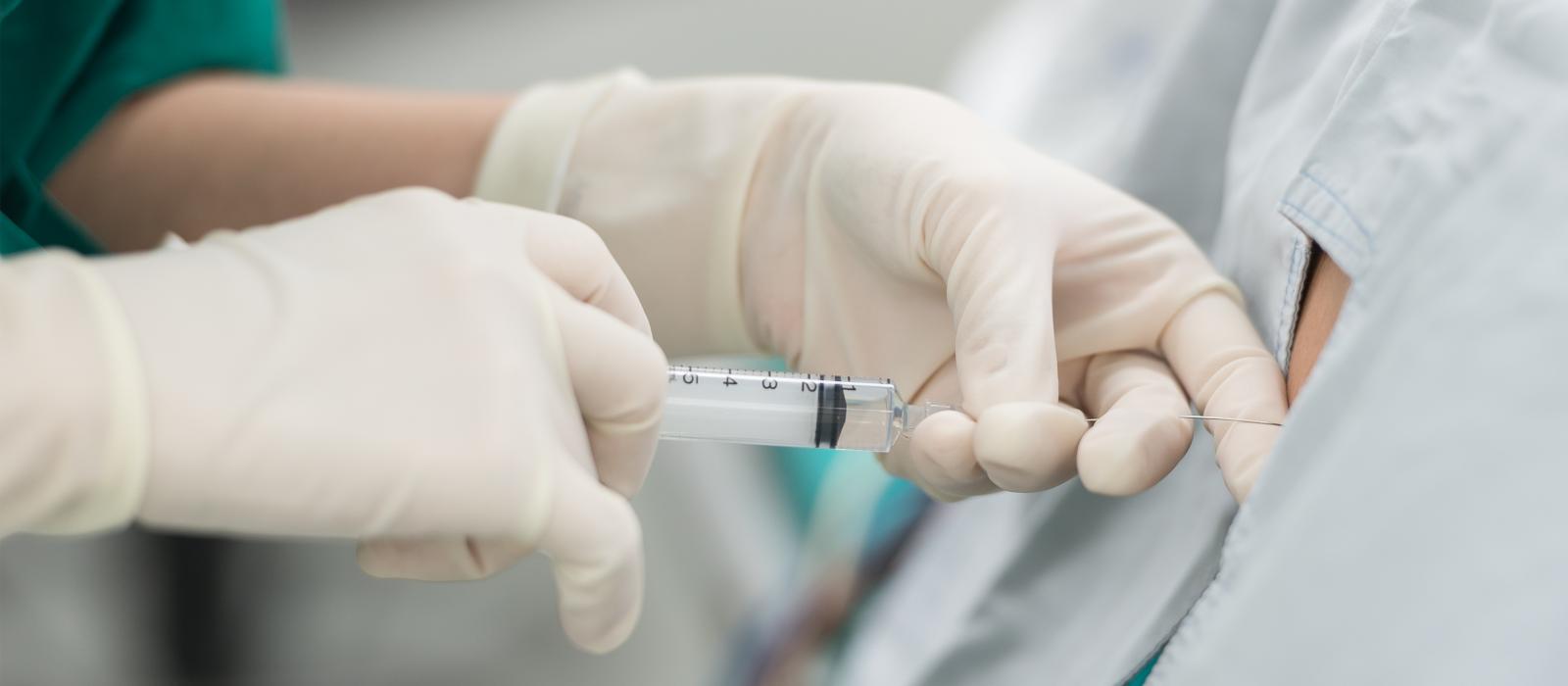Introduction
Pulsed radiofrequency (sometimes abbreviated to 'PRF') is a treatment for pain which targets sections of one or more nerves which may be transmitting pain signals to the spinal cord and the brain.
It is very similar to radiofrequency neurotomy (see this page for details on for example cervical facet radiofrequency neurotomy) in that a thin needle is positioned next to the target nerve and an electric current is passed through the needle which heats the nerve.
The main difference between a normal radiofrequency device and a pulsed radiofrequency device is that the normal device supplies continuous heat at around 85C to the nerve, while the pulsed device supplies 'pulses' of heat (generally at less than 40C) which minimises damage to the nerve.
Conventional radiofrequency treatment is sometimes referred to as 'continuous radiofrequency' or 'CRF' to distinguish it from pulsed radiofrequency.
The science behind the pulsed radiofrequency device is called 'neuromodulation', where the function of the nerve is changed ('modulated') by the treatment, rather than the nerve being blocked.
Pulsed radiofrequency can target the same types of pain as radiofrequency neurotomy, as well as some types of pain that radiofrequency neurotomy cannot treat. It also has fewer side effects than radiofrequency neurotomy (for example it rarely causes weakness or loss of normal sensation).
Many people report a significant reduction in levels of pain for anything from four to six months after treatment.
Indications
- Facet joint syndrome.
- Shoulder pain.
- Occipital neuralgia.
- Neuropathic pain.
- Nerve entrapment syndromes.
Preoperative Instructions
You should avoid undergoing any other medical procedures, such as for example dental treatment or a colonoscopy, within 48 hours (before or after) of the procedure.
Do not eat or drink anything in the 6 hours immediately before the procedure (although any medication can continue to be taken with small sips of water). Medication for diabetes should not be taken until after the procedure.
If you are taking any medication containing aspirin, you should stop taking this at least 11 days before.
Please also let us know ahead of the procedure if…
- You are taking any antibiotics.
- You have a pacemaker or defibrillator.
- You are ill (in which case we may need to postpone the procedure) .
You should also not drive yourself to or from the appointment.
Procedure
Pulsed radiofrequency treatment generally takes around 30-60 minutes.
You are asked to lie face down on a special fluoroscope (real time X-ray) table and an IV line is put in place in your arm or hand to supply a light anaesthetic. You will stay awake during the procedure.
The injection site is then cleaned and numbed with a local anaesthetic and a thin needle is inserted at the injection site and then guided (use the fluoroscope image) into position.
A quick test is then conducted by passing current through the needle to the nerve – this may produce a brief tingling and some muscle twitching in the affected area (neck, back or legs) – this is to confirm that the needle is positioned correctly.
At this point a local anaesthetic is injected via the needle to numb the nerve and, when this has taken effect, the actual application of the pulsed radiofrequency treatment begins. The treatment itself takes no longer than a few minutes.
Once complete the needles and wires are removed and a bandage placed on the insertion site. You will then be moved to the recovery room where you stay for observation for around an hour.
Postoperative Instructions
After the procedure you are able to return home. There is no restriction on day-to-day activities, although, as advised above, due to the sedation you should not drive a vehicle for at least 24 hours after the procedure (so it is a good idea to have someone drive you to and from the appointment).
In some cases, there may be some pain or discomfort (sometimes a sensation similar to sunburn) and/or bruising to the skin at the injection site, which may last for about a week.
Risks
Pulsed radiofrequency treatment is a very low risk procedure – however all medical treatment comes with some level of risk. Possible complications may include…
- Bleeding.
- Infection.
- Pain at injection site.
- Allergic reaction to anaesthetic and / or contrast dye.
If you experience severe pain or weakness, or your temperature is over 38C, you should let us know urgently or visit the nearest emergency department.
